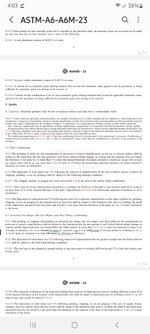mrmalcolm
Marine/Ocean
- Jan 24, 2024
- 53
May I ask if colleagues have any experience in non-destructive testing of thick plates?
Where thick plates (steel plates with a thickness greater than 100mm) ,the steel mill has conducted 100% ultrasonic testing and passed it.
Then, during non-destructive testing of the weld after welding at the fabrication, discontinuities caused by steel plate defects were discovered.
Can this situation be considered as the quality of the steel not meeting the standards? How to consider this situation?
Best Regards
Where thick plates (steel plates with a thickness greater than 100mm) ,the steel mill has conducted 100% ultrasonic testing and passed it.
Then, during non-destructive testing of the weld after welding at the fabrication, discontinuities caused by steel plate defects were discovered.
Can this situation be considered as the quality of the steel not meeting the standards? How to consider this situation?
Best Regards

